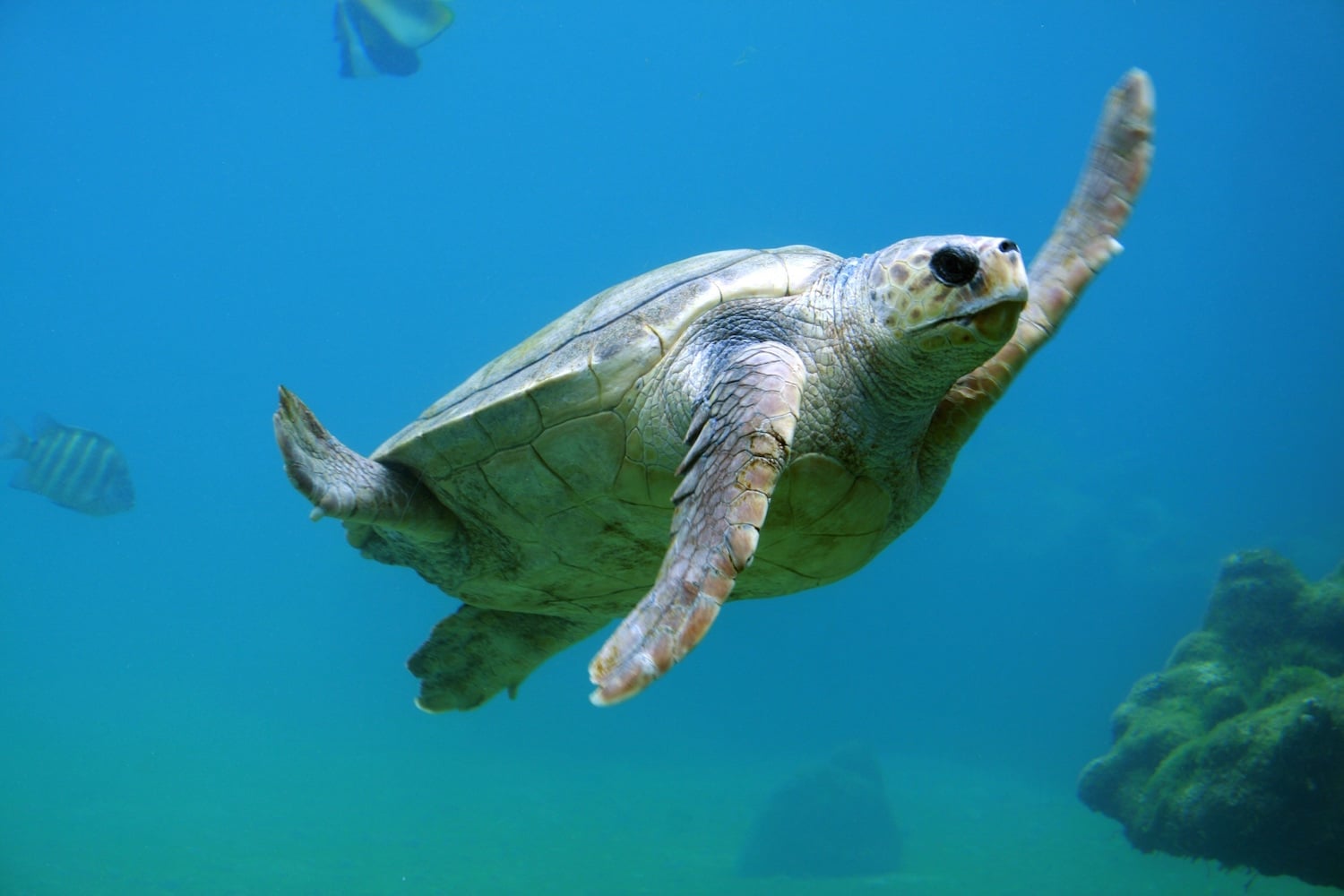
By Katie Foote, Epicure & Culture Contributor
With an ever-increasing number of endangered water species, turtle conservation has never been so important. Turtles have to overcome several hazards in their long lives, including habitat loss due to a rise of human settlement along coastal areas and illegal hunting. They are also susceptible to accidental capture in the fishing industry, climate change and diseases caused by water pollution.
The good news is there’s a lot you can do to help protect turtles. You can get involved in caring for these beautiful creatures by assisting in hatcheries, maintaining clean beaches and helping with marine conservation so they can live and breed in a safe environment. For wildlife lovers, this will be an experience you’ll never forget.
Check out these responsible turtle encounters, ranging from short tours in the United States to immersive, multi-week volunteer opportunities abroad.

1) Save The Sea Turtles Of The Mediterranean (Athens, Greece)
ARCHELON, the Sea Turtle Protection Society of Greece, offer tours around their local rehabilitation center to help visitors gain a better understanding of the issues surrounding the country’s wildlife. Meet the passionate staff who work with the local sea turtles and get a close look at these magnificent creatures. Revenue from the tour goes to providing care, medical aid and food to the injured turtles that the organization takes in, so you’re certainly doing your part.
The 3-hour experience costs $21 per person.

2) Help Injured Sea Turtles (Jekyll Island, Georgia, USA)
You don’t have to travel outside the US to engage in turtle conservation. The Georgia Sea Turtle Center, located on Jekyll Island, Georgia is an internationally acclaimed facility that integrates wildlife rehabilitation with cutting-edge research and hands-on educational programs for the public.
The center treats injured and ill animals and visitors can get up close with sea turtles undergoing rehabilitation. You can also participate in night patrols to observe these creatures in their natural habitat. The facility is passionate about promoting conservation awareness, encouraging responsibility for maintaining healthy ecosystems and empowering individuals to act locally, regionally and globally for environmental protection.
Admission to the center is $7 for adults. Your entrance fee helps offset operational costs for rehabilitated turtles.
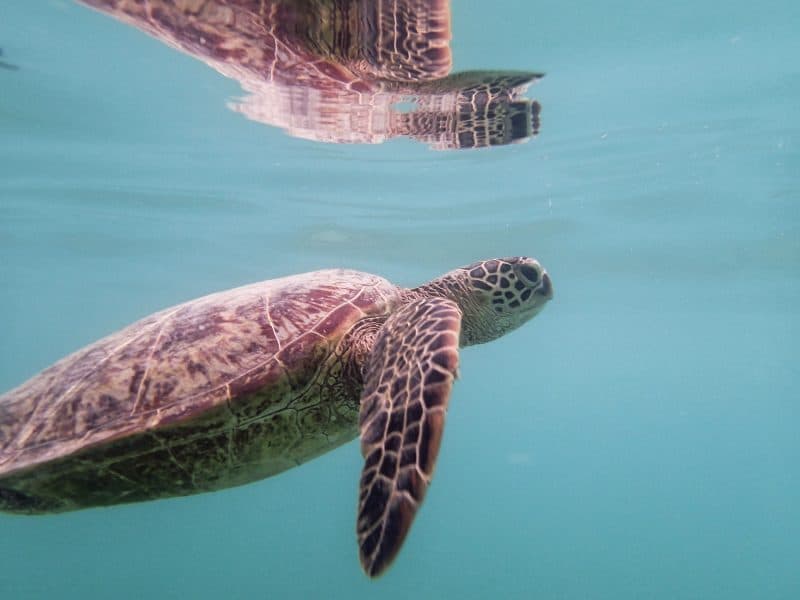
3) Nurture Injured Sea Turtles (La Palma, Costa Rica)
Latin American Sea Turtles (LAST) is an organization of wildlife experts from 40 nations who are dedicated to saving endangered water species, especially sea turtles. They have a research station close to La Palma, Costa Rica and you can join them on a boating expedition to catch sea turtles for tagging.
You can help researchers use turtle-friendly nets to bring turtles for a medical check-up and take biometric data, including blood samples, weight and shell measurements. The turtles are then tagged and released back into the ocean.
This 6 hour tour costs $100 and proceeds benefit LAST.
#Wildlife lovers will enjoy these responsible sea turtle #tours and encounters. Check them out! Click To Tweet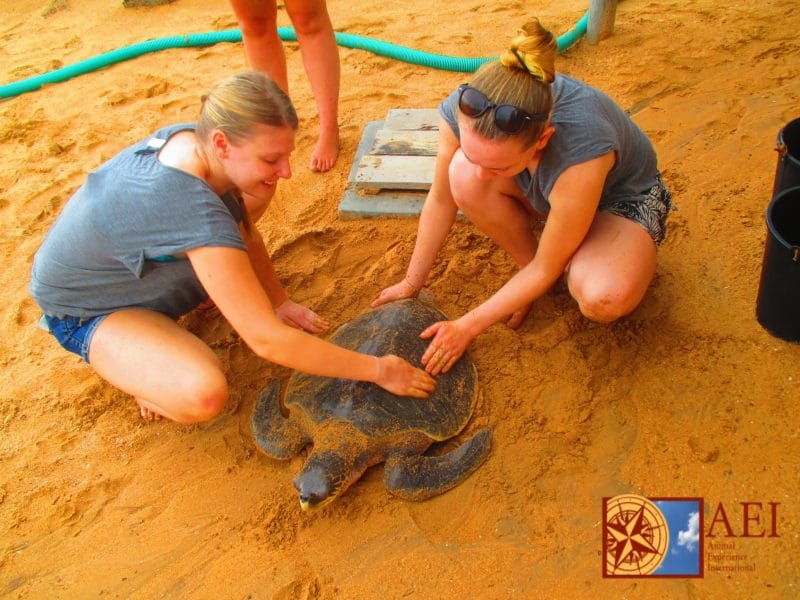
4) Maintain A Turtle Hatchery (Kosgoda, Sri Lanka)
In 2004, a tsunami hit Kosgoda, Sri Lanka and large swathes of beach were lost. The disaster also had a negative impact on people whose livelihoods depended on fishing and tourism. In order to make a living, some of the victims have resorted to selling turtle eggs and jewelry from Hawksbill turtle shells.
In an effort to bring this harmful trade to an end, Animal Experience International has partnered up with a local family to monitor sea turtle activity and conserve local nesting. For example, volunteers buy eggs at local markets and bring them to a hatchery where they can hatch safely, before being released into the sea. The organization also keeps a number of turtles for educational purposes, but these are eventually released.
If you spend a few weeks volunteering at this location, you may help with beach conservation work, maintenance of the turtle hatchery, turtle feeding and cleaning. You can also take part in the organization’s educational program by leading tours through the center, which houses turtles that can’t be released into the wild. These normally have damaged shells or missing flippers.
The program is open all year round and you can stay as long as you want! The price depends on the duration of your stay, but spending two weeks in Sri Lanka costs approximately $1400 USD. You can also visit the Kosgoda Turtle Hatchery on your own.

5) Adopt A Turtle (Juno Beach, Florida)
Loggerhead Marinelife Center (LMC) in Juno Beach, Florida is dedicated to conserving ocean ecosystems, especially threatened and endangered sea turtles. They sponsor a variety of programs, so you can find the one that best suits your availability, interest and budget.
In June and July, you can participate in Evening Turtle Walks at Juno Beach ($17) to learn about and see loggerhead sea turtles nesting and laying eggs.
You can also adopt a sea turtle for $35 and receive a personalized adoption certificate, a subscription to the Marinelife Review e-newsletter and a photograph of your turtle. Proceeds from your adoption directly benefit the continued care and treatment of sick and injured LMC sea turtles.
If you want accommodation that supports this cause, consider Palm Beach Marriott Singer Island Beach Resort & Spa’s Little Loggerhead Package. It includes Adopt-A-Turtle, a private tour for four of the LMC and a plush turtle for your family.
Finally, LMC offers SWIM (Serving the World Imperiled Marine Life) eco-tours to Hawaii and Nicaragua if you want to extend your interaction with turtles to a multi-day trip.
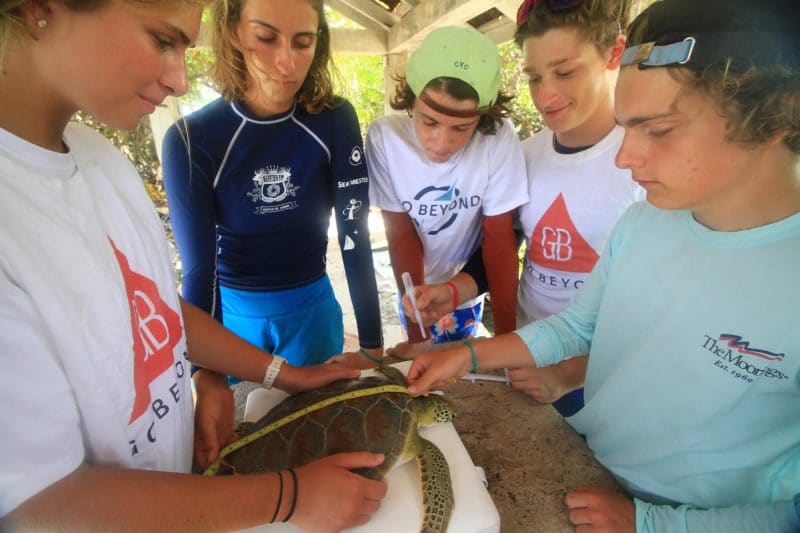
6) Collect Data For Sea Turtle Conservation (British Virgin Islands)
GoBeyond Student Travel gives students the opportunity to experience environmental conservation and stewardship while working with sea turtles in the British Virgin Islands. The organization works in conjunction with the BVI Conservation and Fisheries Department to capture, measure, tag, and release as many juvenile turtles as possible and distribute data to local biologists. Scientists have used this data to highlight the importance of nearshore foraging habitats for juvenile sea turtles, thus influencing appropriate conservation measures to protect critical Caribbean marine habitats.
The “Preserving Paradise” Journey for students aged between 14 and 18 costs around $4770 for 100 hours of volunteering.
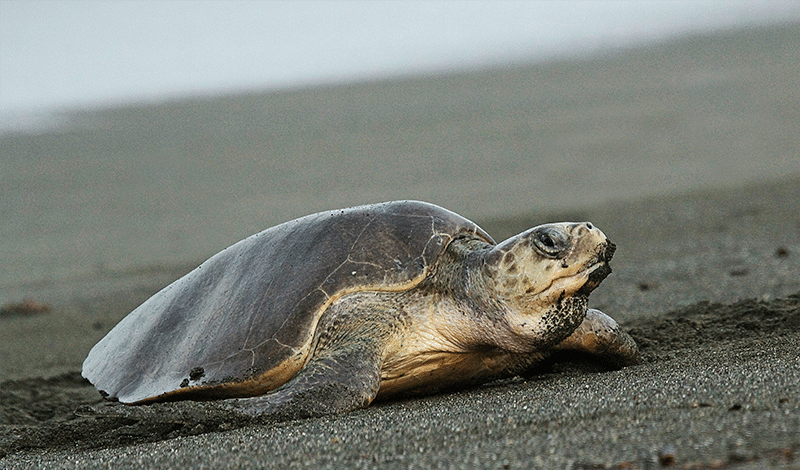
7) Release Sea Turtle Hatchlings (Osa Peninsula, Costa Rica)
Osa Turtles is a group that helps protect endangered sea turtles around the Osa Peninsula and beyond. The community offers a two-hour ecology walk on Carate Beach, where a ranger talks about the beach, its endangered sea turtles and their nesting habits. Visitors may be able to set hatchlings free into the ocean and help protect nests from predators with special mesh. If you’re lucky, you may come across a nesting loggerhead sea turtle with hatchlings.
All the revenue from this $40 tour will be invested into the community, paying locals who patrol the beaches year round in collaboration with Cotorco; a sea turtle protection group.
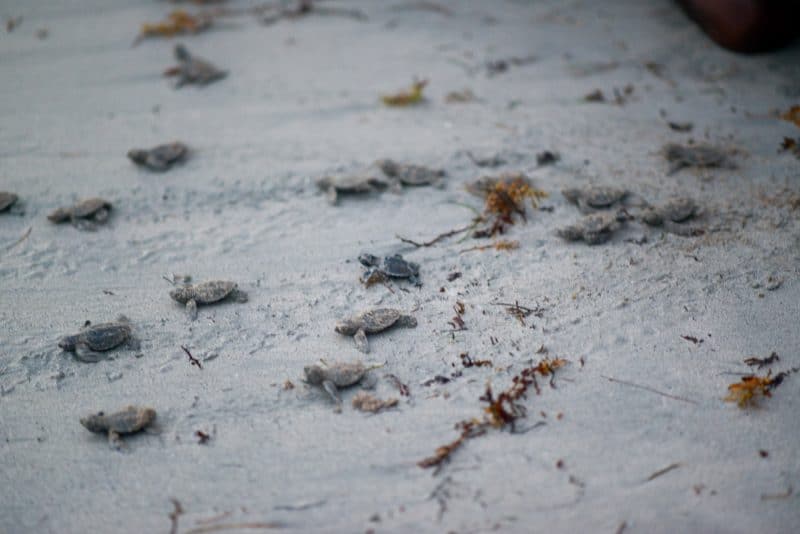
8) Help With Nest Protection (Coconut Bay Beach, Saint Lucia)
Saint Lucia’s Coconut Bay Beach Resort & Spa is located on beaches that serve as nesting grounds for three species of endangered sea turtles: the Leatherback, the Hawksbill and the Green sea turtle from March to November. The resort works with the Eastern Caribbean Marine Managed Area Network to run the CocoLand Turtle Watch program.
During the nesting season, guests of all ages can get involved with the interactive and educational programs of Turtle Watch. You can help resort staff with nest identification, hatchling supervision and reporting to island conservationists. You might also get to watch hatchlings starting their journey into the ocean.
If your visit doesn’t coincide with hatching season, CocoLand Kidz Klub SCOUTS (Seeing, Crafting, Observing, Understanding, Tasting, Saint Lucia) program allows children to participate in sea turtle themed games, arts and crafts all year round. These activities are geared toward teaching children to identify different species of sea turtles and learn about conservation.
All-inclusive rates start at around $169 per night for adults.
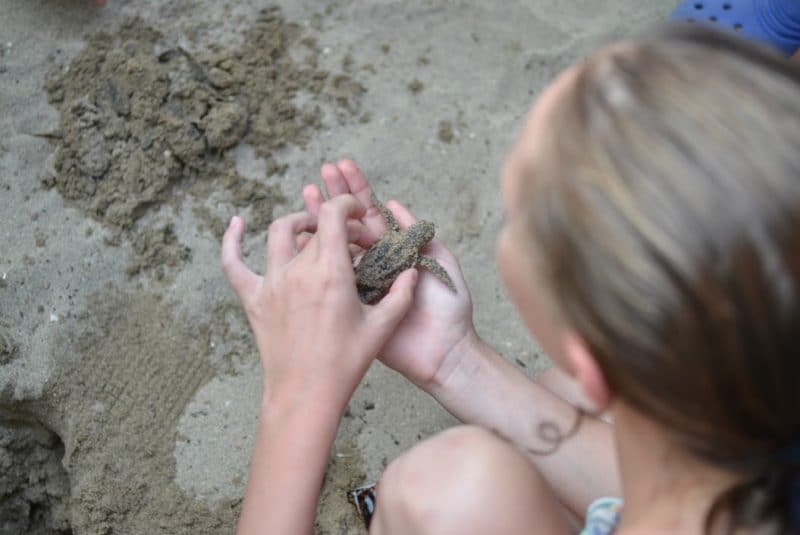
9) Watch Turtles & Promote Conservation (Jamaica & Antigua)
From May to October, Island Routes offers turtle-watching tours in Jamaica and Antigua, which are done in collaboration with The Sandals Foundation and local conservation authorities. During the tour, visitors can help guides monitor endangered turtles and watch hatchlings head to the sea, ensuring that they reach their destination safely.
This tour only costs $35 per person. Proceeds from these tours benefit conservation efforts of the Oracabessa Foundation in Jamaica and the Antigua Sea Turtle Project. In 2015 alone, over 21,000 turtles in the region were released into the sea.
See here for more information about the program in Ocho Rios, Jamaica and St. John’s, Antigua.
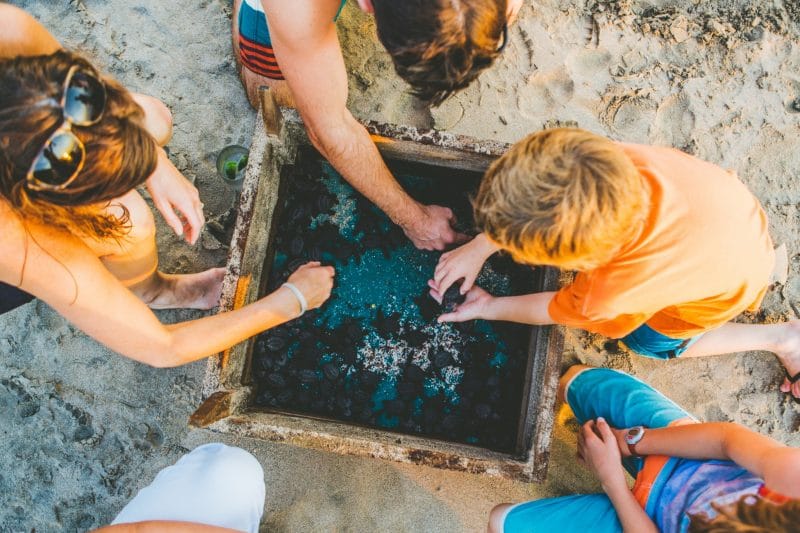
10) Meet Endangered Olive Ridley Turtles (Guacilito de la Isla, Nicaragua)
Mukul Beach Golf & Spa is Nicaragua’s first luxury resort and serves as a refuge for the endangered Olive Ridley turtles, who are indigenous to the Emerald Coast. Through the resort’s turtle-watching program, you can learn about these adorable but delicate creatures, and watch as they lay their nests on the resort’s protected shores. You can also help release them back into the wild.
The two-hour tour is can be booked through the resort for $15.
These responsible #tours offer close encounters with sea #turtles in different countries. Click To Tweet
11) Tour A Giant Tortoise Breeding Center With Local Students (Galapagos, Ecuador)
A unique partnership between Adventure Life and Ecology Project International (EPI) gives you the opportunity to spend a day on a conservation or research project on Ecuador’s Galapagos Islands.
EPI is a nonprofit that inspires youth to actively participate in local conservation efforts. The organization’s students take tourists on tours around Fausto Llerena Breeding Center to see giant tortoises and land iguanas. They also share their research findings with visitors. This day trip costs $190.
This unique experience should be listed in every Galapagos travel guide as well as every Ecuador travel guide!
Do you have any turtle conservation experiences to add? Please share in the comments below!
Recommendations:
How Tourism Is Saving Oaxaca’s Sea Turtles [Blog Inspiration]
Lonely Planet’s True Stories From The World’s Best Travel Writers [Great Reads]
Clever Travel Companion Pickpocket-Proof Garments [Travel Safety]
Katie Foote
Latest posts by Katie Foote (see all)
- 8 Outstanding Conservation Safaris Around The World - Apr 12, 2022
- These 10 Women Whiskey Distillers Will Make You Crave A Manhattan - Dec 12, 2018
- Ethical Travel: Should You Visit Thailand’s Long Neck Women Villages? - Dec 9, 2018
- 8 Pioneering Vegetarian Vacations Around The World - Aug 13, 2018
- A New Perspective: Can Travel Help Reverse Alzheimer’s? - Aug 5, 2018

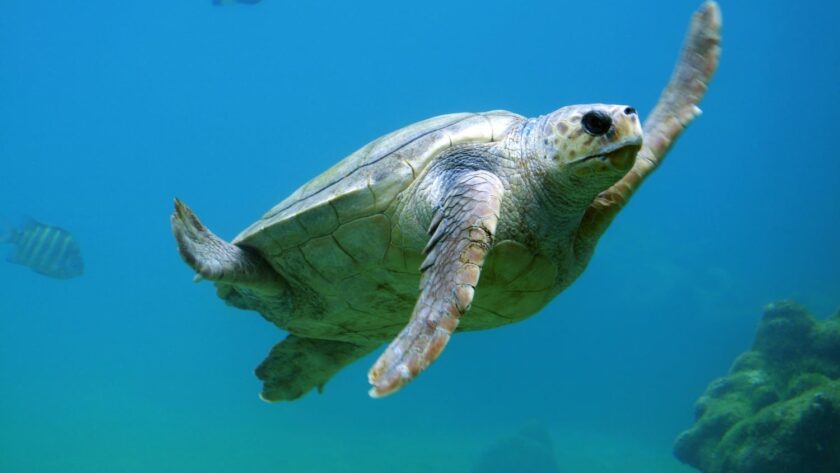
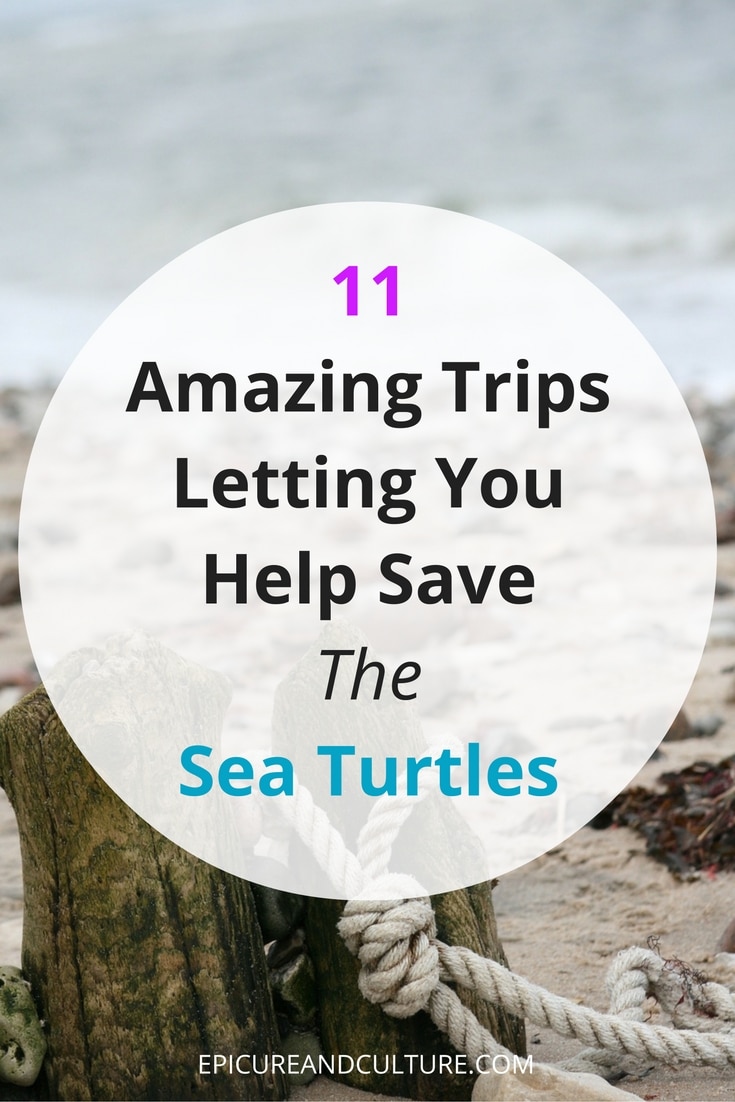


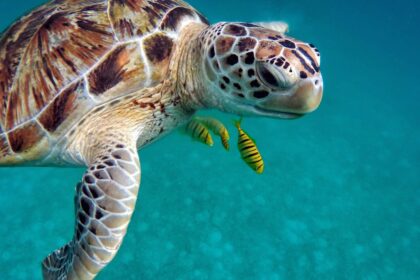
arhh they’re so cute, I love the Cortoco turtle photo, I would love to do something like this, only I wish there was someone who I knew who would be interested too. Are there many people who go on their own to do turtle conservation?
Looks like some great experiences you have listed. Check out http://www.seeturtles.org for more opportunities – they are legit!